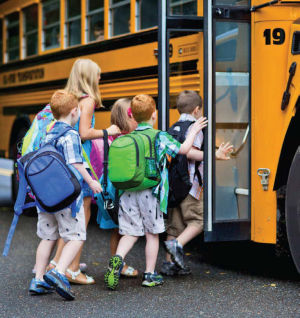Forms, posters, information and requirements for employers, links to outside resources and newsletter archives.

As we move through the second half of 2025, it’s clear that costs are higher than they were just a few years ago. Like many of our policyholders, we at MTM have also experienced increases in our operational expenses—including one of the most significant drivers: medical inflation.

Partnering with Employers to Protect Workers
MTMIC has partnered with them for the past 19 years.
The Michigan Occupational Safety and Health Administration (MIOSHA) partnered with Michigan employers who voluntarily participated in the 20th anniversary of the Take a Stand for Workplace Safety and Health initiative, underscoring a shared commitment to improving workplace safety and health.

By the time you are reading this, summer is technically over. Students return to class, fun in the sun vacation time is pretty much regulated to weekends only. Statistically, work related injuries increase over the summer. Thinking back on Summer 2025, with the heat we experienced, an increase in injuries involving outdoor workers would not seem unusual. Another statistic indicates approximately 40% of summer work injuries are sprains, strains and tears. Possibly these injuries are attributed to employees taking vacation time and co-workers having to pick up the slack. A “pre-injury” could have occurred while having fun on the weekend, thereby setting you up for a more serious injury as a result of work duties. The heat index, or thoughts about upcoming plans could result in simple inattention.

Due to recent pending legislative changes, I thought that it would be beneficial to provide the history of workers’ compensation as well as where we are today.
Workers’ Compensation is a state-mandated insurance program that provides wage replacement, medical treatment, and rehabilitation benefits to employees who are injured while performing their job duties.

Young workers experience high rates of job-related injuries. According to the Department of Labor, in fiscal year 2020, teens aged 15 to 19 were treated in the emergency room for a workplace injury about every five minutes. These injuries often result from the numerous hazards present in the places where they typically work, such as sharp knives and slippery floors in restaurants. Young workers are particularly at risk for workplace injuries due to their inexperience, as well as their physical, cognitive, and emotional developmental traits. Additionally, a lack of safety training contributes to the high rates of injury. They often hesitate to ask questions and may fail to recognize workplace hazards.

A little bit of a refresher course
How do we determine an injured employee’s Workers’ Compensation weekly benefit amount? To calculate an average weekly wage, we need 52 weeks of gross wages dating back from the date of injury. This includes overtime and bonuses. Of those 52 weeks, we pick out the highest 39 weeks. This gives the injured worker the highest possible average weekly wage.

